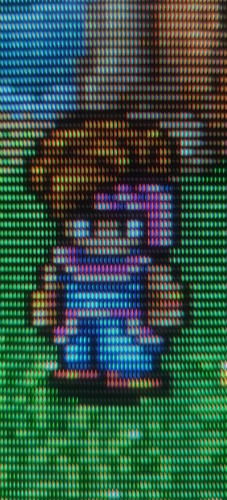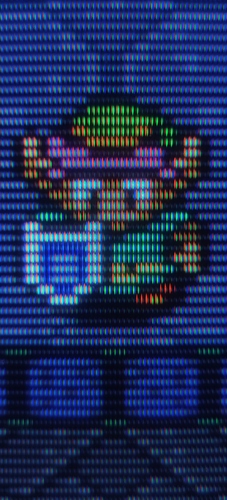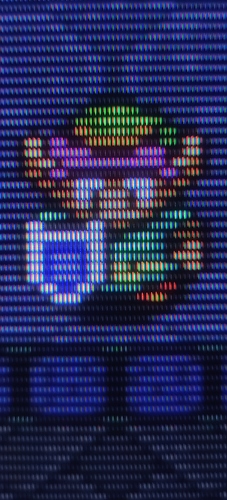Funnily enough I was just reading about this TV on R-Tings - it may very well be a great stop gap until QD-OLED’s come down in price. Mind I haven’t upgraded my TV in about 10 years - I’m still looking at a 1080p SDR screen to watch TV on.  We’ve been dscussing getting a new TV recently so maybe this is it but then again I want to see what the QD-OLEDs are like.
We’ve been dscussing getting a new TV recently so maybe this is it but then again I want to see what the QD-OLEDs are like.
Yes i was using the latest version. It did look strange, which probably explains my experience.
Yes I’ve made it clear in my latest version in the menu that W-OLEDs aren’t supported. It’s a shame as they are superior TVs in most aspects but sadly not in this very niche one.
I’m hoping you’re right, hopefully QD-OLED will bloom enough to simulate CRT phosphors like we’re doing here. It checks all the right boxes.
V2.1 Sony PVM Shader is up on Github
I’ve improved the accuracy of the phosphors by breaking them up into per channel curves and I’ve improved the colour accuracy.
I’ve stream lined my options menu and provided instructions on how to use this shader as its not going to work for everybody.
I also noticed two things with my photos a) that my WB was too low and b) I should help the LCD a little bit by upping the ISO for it to make it brighter - hopefully this simulates what a DisplayHDR 1000 and gives a better comparison in terms of where colours are etc. Hopefully this isn’t taken as cheating (it might be - a bit)
So I decided to change things up a little and give Secret of Mana comparisons too. My first thoughts are that my horizontal sharpness/attack needs to be reigned in a bit as its giving too wider an arch on the noses. Should be simple to fix.
LCD Photos: OnePlus 8 Pro Camera: Pro Mode, ISO 200, WB 5000K, Aperture Speed 1/60, about 10cm from the screen, 48MPixel JPEG.
CRT Photos: OnePlus 8 Pro Camera: Pro Mode, ISO 100, WB 5000K, Aperture Speed 1/60, about 10cm from the screen, 48MPixel JPEG.
Not sure if you mentioned this before but any chance of you including a black and white mask pattern for WRGB OLED compatibility? It may not display the RGB triads from up close and in screenshots with such a workaround but from a normal viewing distance the overall effect and experience of the mask might actually be very similar or arguably better due to some of the other inherent advantages of OLED TVs.
Are you sure that 1 horrible shot by @c9f5fdda06 is really representative of the OLED experience? I used to use an OLED TV and never noticed anything like that. That was before I tried dabling in full strength masks though. Mask Strength would have been about 0.30 using HSM Mega Bezel Reflection Shader (which uses - CRT-Guest-Advance under the hood).
There are also anecdotal reports from @brainbin74, another avid OLED user and CRT Shader Preset developer who if I recall correctly swore that there was no noticeabe subpixel issue when using his RGB mask with his modified CRT-Royale-Kurozumi presets.
He even went as far as to recreate the mask because he demonstrated that the mask PNG’s which are currently in use by at least some shaders had many imperfections and a somewhat dirty appearance.
I’ll post the relevant links to his efforts and results if I can find them. He was using a Panasonic OLED TV.
Please show off what crt shaders can do!
Please show off what crt shaders can do!
Please show off what crt shaders can do!
Id love to support W-OLEDs as you’re right they do have other inherent advantages. What is this mask everybody is talking about though and how does it work?
From the photos I’ve seen though it completely messes up the look/accuracy of the shader - it looks absolutely terrible. I’d love to see photos that contradict that though.
In CRT-Guest-Advanced it’s Mask 7. You should try it for yourself and see. It’s a BW (greyscale?) Version of the RGB mask. Remember the masks we use don’t generate colour information, they’re just a filter layer overlaid on the subpixels, which already have the correct colours so it’s more than possible to still have the all the colours intact while preserving the CRT mask pattern that is probably more important for the simulation than the RGB triads themselves. So you’ll get your colours and the wires or slots of the mask doing lovely things to the pixels without the distortion and artifacts caused by the subpixels incorrectly mixing with the RGB mask triad’s colours.
From normal viewing distances, it’s virtually indistinguishable from a mask with RGB triads as it should be because the RGB triads should only be noticeable from extremely close distances from the screen and in extreme close up screenshots.
Maybe that just means there’s more work to be done or that something else is amiss because crt-guest-advanced with Mask 7 on an OLED TV (or any other TV for that matter) does what it says on the box and looks great!
Thanks for all this it’s fantastic to have your wealth of knowledge to help me get up to speed. Ok I’ll have a read of these links and further my understanding of it. My biggest problem is that I don’t have access to an OLED to test ideas out on.
I’m merely a spectator in most of the discussions by the much more learned folks around here that I’ve linked to but I would have read and remembered plus I have my own experience with my OLED TV which (unfortunately?) is down at the moment. The thing with me is that I tend to remember things.
I’m no shader creation expert like yourself but perhaps you can experiment with a greyscale version of whatever RGB Mask you currently use and see if it looks as it should on your display and TV? Remember to assess it at a normal viewing distance as well as close-up.
I’m sure the growing OLED user community would appreciate your efforts in this regard.
I personally don’t see what would be gained by adding the BW mask to this shader. The experience for OLED users wouldn’t be any better than what GDV already offers, unless I’m missing something.
I think this is probably likely. The way this shader works to use individual lcd sub-pixel elements to light up per shader pixel would probably be undone by having a BW mask. With a BW mask you don’t use the lcd sub pixels and each lcd element would be outputting red, green and blue, rather than individual lcd sub elements.
Small adjustment to Horizontal Sharpness: 1.9, Horizontal Attack: 0.9 makes the horizontal accuracy slightly better but its still not quite there. Maybe I need to split out the horizontal attributes into the three channel beams, like I did for the vertical channels (probably).
CRT Photo: OnePlus 8 Pro Camera: Pro Mode, ISO 100, WB 5000K, Aperture Speed 1/60, about 10cm from the screen, 48MPixel JPEG.
LCD Photo: OnePlus 8 Pro Camera: Pro Mode, ISO 200, WB 5000K, Aperture Speed 1/60, about 10cm from the screen, 48MPixel JPEG.
That’s really fantastic. Nothing more to say 
Yes split the channels, my god split the channels, I’m always for splitting the channels 
Ik I sound facetious but fr, split the channels, it’s easier to dial in subtle effects this way imho
I’ve got to say, this is really fantastic! 
The magic 8 ball is telling me there is a PVM HDR shader integrated in the Mega Bezel in the near future 
I would be humbled - that would be absolutely amazing!
 I do feel like I’m going on a bit and you’re right channels is the way to go!
I do feel like I’m going on a bit and you’re right channels is the way to go!






